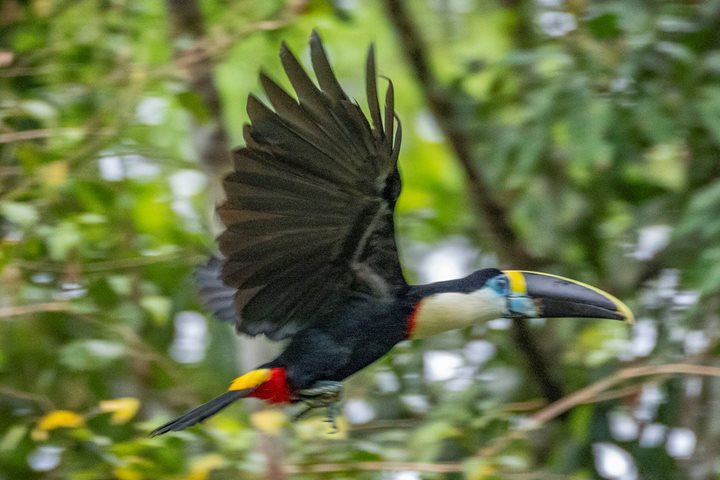After a good night’s sleep, we were ready to continue our exploration of the Pacaya Samiria reserve; today we reached our furthest point into the reserve and the whole area feels wilder. During the morning we looked for wildlife on the Zapote River and were not disappointed! Besides the usual abundance of bird species, including some great ones like the white-headed marsh tyrant, the white-throated toucan and the chestnut-eared aracari, we had some surprising encounters of the mammalian type. The eagle eyes of our local guide discovered a tamandua looking for termite or ant nests high in the trees. Tamanduas are arboreal anteaters with a prehensile tail, big claws and a strong musculature that makes them excellent climbers, and we watched this one moving around the branches with extraordinary ease. What a privilege to observe such an interesting creature in the wild! We also found some squirrel monkeys, and had our first sighting of a new species for the trip, the monk saki. Monk sakis are big monkeys with long, coarse hair and a bushy tail that makes them look from a distance like a wet mop, but they are an extremely interesting and endangered species that we all had the chance to watch.
Later we stopped at the small fishing community of Zapote, where we looked at the pretty handicrafts that the local women made, and watched some the men hauling in the catch of the day. Several interesting fish species were in the process of being cleaned and packed in ice and rice husks to preserve them for the long ride to the local markets in Requena or Iquitos.
During the afternoon we boarded the skiffs again and explored the Pacaya River. Much fewer people live along its shores, and the abundance of wildlife is a good testimony; we watched pink river dolphins, several more monkey species and great numbers of birds, including very large numbers of great egrets and neotropical cormorants around the Yanayacu lake. Many of us had a refreshing swim on the lake, putting an end to another excellent day in the Peruvian Amazon basin.







